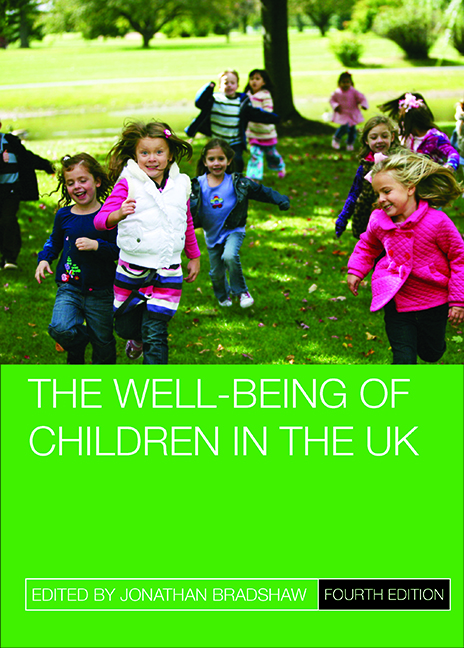Book contents
- Frontmatter
- Contents
- List of figures and tables
- List of abbreviations
- Notes on contributors
- Acknowledgements
- One Introduction
- Two Demography of childhood
- Three Child poverty and deprivation
- Four Physical health
- Five Subjective well-being and mental health
- Six Education
- Seven Housing and the environment for children
- Eight Children’s time and space
- Nine Children and young people in care and leaving care
- Ten Child maltreatment
- Eleven Childcare and early years
- Twelve Children, crime and correction
- Thirteen Conclusion
- Bibliography
- Index
Seven - Housing and the environment for children
Published online by Cambridge University Press: 01 September 2022
- Frontmatter
- Contents
- List of figures and tables
- List of abbreviations
- Notes on contributors
- Acknowledgements
- One Introduction
- Two Demography of childhood
- Three Child poverty and deprivation
- Four Physical health
- Five Subjective well-being and mental health
- Six Education
- Seven Housing and the environment for children
- Eight Children’s time and space
- Nine Children and young people in care and leaving care
- Ten Child maltreatment
- Eleven Childcare and early years
- Twelve Children, crime and correction
- Thirteen Conclusion
- Bibliography
- Index
Summary
Key statistics
• Children are more likely to live in overcrowded housing, but are no more likely to live in non-decent housing than the rest of the population.
• Families are more likely to be living in non-decent housing, and to be less satisfied with their housing, in the private rented sector. Children are most likely to experience overcrowding in social housing.
• Lone parents are at greater risk of experiencing homelessness and living in poor neighbourhoods.
• At the European Union (EU) level, UK households are ranked in the top half of countries on a number of measures of satisfaction with housing and living environment.
Key trends
• UK wide, housing conditions continue to improve over time, although the private rented sector continues to have a higher proportion of poor housing than other tenures.
• Problems in the local environment have also declined over time.
• Officially measured homelessness, as well as prevention of homelessness activity, has increased modestly over the period 2009-15.
• The ending of assured short-hold tenancy has increased three-fold as a reason for homelessness in England since 2009/10.
Key sources
• English Housing Survey (EHS) and other national house condition surveys
• Office for National Statistics (ONS) well-being indicators
• European Union Statistics on Income and Living Conditions (EU-SILC)
• Homelessness and prevention of homelessness statistics
Introduction
This chapter examines the extent to which children live in poor housing and environments, including experiencing homelessness, in the UK. We do not need research to know that children cannot flourish to their full potential if they live in insecure, cramped, damp or dangerous housing or live in environments characterised by noise, crime and pollution. While robust studies are few, reviews conclude that the cumulative evidence of many, often smaller, studies demonstrates a link between poor housing and poorer children's well-being, particularly in terms of impacts on health (Shaw, 2004; Quilgars, 2011; Barnes et al, 2013), as well as longer-term poorer outcomes into adulthood (Marsh et al, 1999). There is also evidence that housing circumstances (such as cost, condition and location) can mitigate the effects of poverty (Tunstall et al, 2013).
- Type
- Chapter
- Information
- The well-being of children in the UK (4th edition) , pp. 179 - 208Publisher: Bristol University PressPrint publication year: 2011



